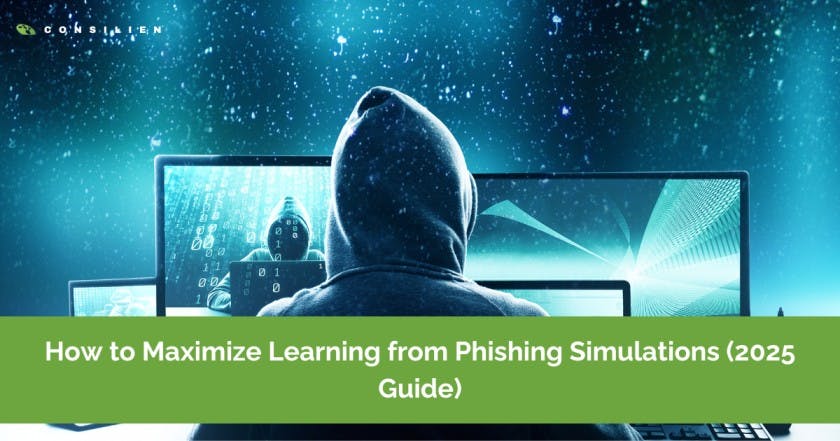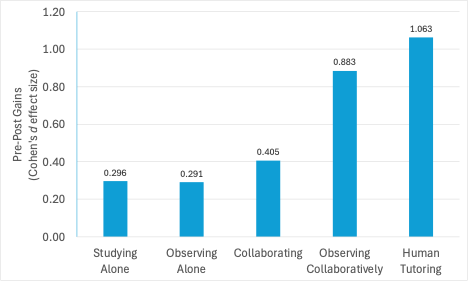How to Maximize Learning from Phishing Simulations (2025 Guide)

Phishing remains one of the most significant cybersecurity threats to businesses in 2025. Even with robust firewalls and antivirus systems, a single click from an unsuspecting employee can compromise an entire organization. That's why phishing simulations are now a key part of employee cybersecurity training. Running phishing simulations, though, isn't enough. The goal is to ensure that employees learn effectively from these exercises, not just pass or fail them. This article explains how to maximize learning from phishing simulations, supported by research and practical strategies.
What are Phishing Simulations?
A phishing simulation is a training exercise designed to test how employees respond to fake phishing emails or messages. These simulations mimic real cyberattacks but don’t cause harm. The purpose is to see how staff react whether they identify the threat, report it, or click on it.
Simulations can come in various forms:
- Email simulations: Fake emails with suspicious links or attachments.
- Voice (vishing) simulations: Fake calls pretending to be from IT or management.
- SMS (smishing) simulations: Text messages that encourage clicking on a malicious link.
- Social media phishing: Fake friend requests or messages on platforms like LinkedIn.
Why Many Phishing Simulations Fail
Studies show that traditional phishing training doesn’t always lead to long-term improvement. For example, some research found that annual cybersecurity training only reduced phishing click rates by around 1.7%.
So, what’s going wrong?

People Forget Quickly
Cognitive science explains this through the “power law of forgetting.” People forget nearly 80% of new information within 30 days if it isn’t reinforced. When organizations train employees once a year, most of that knowledge fades away before the next session.
Watching Videos Alone Doesn’t Work
Many companies rely on short videos to train staff. While videos can explain the basics, they often result in shallow learning. Without active participation or real problem-solving, employees remember little. For example, studies show that learners who solve problems or discuss real examples retain more knowledge than those who only watch tutorials.
Lack of Engagement
Employees are busy. When training feels like a formality, they rush through it. Without interactivity or relevance to their daily work, the lessons don’t stick.
Combine Training with Real-Time Simulations
The best approach mixes education and practice. Train employees first, then test their understanding through phishing simulations.
Start with Foundational Cybersecurity Training
Before simulations, provide short, focused sessions that explain:
- What phishing is.
- Common signs of phishing (urgent language, misspellings, suspicious links).
- How to report suspicious emails.
- The real consequences of falling for scams.
Keep sessions interactive. Add short quizzes, real examples, or group discussions.
Follow Up with Simulated Phishing Campaigns
After training, run phishing simulations. These exercises reveal how well employees apply what they learned. Don’t tell employees exactly when simulations will occur. Unpredictability keeps them alert.
Use Teachable Moments
When someone clicks on a spoofed phishing link, it leads to an educational page. Instead of a generic error message, show a short explanation:
- What signs they missed.
- Why the email was suspicious.
- How to identify similar scams next time.
This immediate feedback helps employees understand their mistakes without feeling embarrassed.
Use Contextual Interactive Learning
Research shows that interactive learning, where employees actively participate, leads to better knowledge retention and better outcomes. In a 2025 study, bi-directional phishing simulations in context reduced failure rates by 19%, while static, non-bi-directional ones reduced by only 9.5%.
Here’s how it works:
- Employees who click a phishing email receive a short quiz or mini-lesson.
- The actual phishing email appears with visual cues (called “phish hooks”) showing red flags.
- Employees answer a few questions to reinforce what they learned.
This method works because it turns a failure into a learning opportunity. Employees analyze their mistakes and immediately apply the correction, which helps memory retention.
Time the Learning for Maximum Impact
Timing plays a big role in how well employees absorb information.
Avoid Immediate Feedback
When employees fail a simulation and instantly receive feedback, it can trigger frustration or embarrassment. This emotional reaction interferes with learning.
Provide Feedback Within 24 Hours
Wait a few hours before delivering the interactive learning moment. This short delay:
- Keeps the experience fresh.
- Reduces emotional stress.
- Ensures employees focus on understanding, not reacting.
This method also prevents employees from warning others about the test, preserving the integrity of your simulation metrics.
Keep Simulations Ongoing, Not One-Time
Cyber threats evolve constantly. A single simulation once a year isn’t enough. To keep employees alert, conduct regular simulations ideally every 2–3 months. Regular repetition strengthens awareness and keeps cybersecurity top of mind. Each round should include:
- New phishing techniques: Mimic current scams in the news.
- Different departments: Customize scenarios for finance, HR, and IT teams.
- Progress tracking: Measure improvement over time.
By repeating and updating simulations, you ensure continuous learning instead of one-time awareness.
Analyze and Share the Results
Data from phishing simulations offers valuable insights. Use it to strengthen your training program.
Focus on metrics like:
- Click rate (percentage of employees who clicked).
- Report rate (employees who correctly reported phishing).
- Repeat offenders (employees who fail multiple times).
Personalize the Learning Experience
Not all employees face the same phishing risk. IT staff, HR personnel, and finance teams encounter different threats. By individualizing the simulation, the degree of involvement and relevance are improved.
Role-Based Scenarios
For example:
- Finance teams might receive fake invoices.
- HR might get fake job applications.
- Executives might face spear-phishing emails pretending to be from partners.
Adaptive Learning
Modern anti-phishing platforms use AI to adjust training difficulty based on employee performance. Employees with good grades are given more complex challenges, and additional guidance is given to struggling employees. This individualized approach ensures that training remains challenging and effective at all times.
Build a Supportive Security Culture
The ultimate goal of phishing simulation is not to penalize, but to build a culture of consciousness and responsibility. Promote open communication about phishing attempts. Encourage employees to report suspicious emails without fear. Praise the team that shows improvement. If you feel that your employees are being supported, you take cybersecurity more seriously. Leaders should set an example. If a manager participates in a simulation and reports suspicious emails, the employee follows that attitude.
“Communication about the simulation should be a culture building, regular exercise,” says Fred, CTO at Consilien. “When employees openly discuss what happened… why someone clicked, what looked convincing… it turns mistakes into lessons. Having peers explain in a positive setting why they may have fallen for a simulation does more to instruct than simply telling the team to ‘not click’ or ‘delete’ questionable requests.”
Partner with Experts Like Consilien IT Company
Managing phishing simulations, tracking employee performance, and maintaining continuous awareness programs require time, resources, and expertise. Many businesses lack the internal capacity to handle these tasks effectively. That’s why partnering with Consilien makes a real difference. Consilien provides tailored cybersecurity awareness training, realistic phishing simulations, and data-driven insights that help organizations identify weak points and strengthen employee response.
Consilien offers:
- Tailored phishing simulation programs.
- Regular employee awareness training.
- Real-time reporting and analysis tools.
- Expert guidance on improving cybersecurity posture.
By working with experienced experts, we can ensure that simulations are realistic, educational and effective. Consilien helps organizations turn employees into the strongest line of defense against phishing attacks.
FAQs
1. What is a phishing simulation, and why is it important?
A phishing simulation tests employee reactions to fake phishing emails or messages. It helps organizations identify weak points, raise awareness, and strengthen cybersecurity by simulating real-world attack scenarios safely.
2. Why do many phishing simulations fail to improve awareness?
They often fail due to one-time training, lack of engagement, or poor reinforcement. Without continuous, interactive learning and feedback, employees quickly forget lessons and repeat mistakes.
3. How can companies make phishing training more effective?
Combine education with hands-on simulations, give timely feedback within 24 hours, and use interactive learning tools like quizzes or visual cues to help employees retain lessons and improve awareness.
4. How often should phishing simulations be conducted?
Running simulations every 2–3 months keeps employees alert, exposes them to evolving phishing tactics, and ensures continuous learning instead of one-time awareness.
5. How can Consilien help with phishing training?
Consilien offers customized phishing simulations, employee security awareness programs, and detailed analytics. Their expert guidance helps organizations build a strong cybersecurity culture and reduce phishing risks.
Conclusion
Phishing simulation is a powerful way to enhance your organization's cybersecurity, but it's the first way your employees can effectively learn and function. Combine regular, interactive, and situational simulations with supportive feedback and clear communication to enhance learning outcomes. Focus on turning failure into lessons and fostering a culture of awareness. To improve the effectiveness of your cybersecurity training and keep employees vigilant against phishing threats, consider partnering with Consilien IT Company. Expert-led phishing simulations and security awareness training programs help teams stay one step ahead of cybercriminals, protecting their businesses from high-cost attacks.